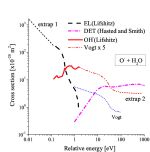EPJ D Highlight - The new frontier in plasma medicine
- Details
- Published on 17 March 2015

Data on the transport of electrical charges in water vapour provide the key ingredients to new plasma models applicable to medicine
Applications of plasmas in medicine are a new frontier in therapeutic treatment. For example, they can help in stimulating tissue regeneration in the contexts of wound healing and dermatology. Before these and further applications can be developed, it is essential to understand the processes at work in plasmas - a unique kind of gas-like state of matter containing charged particles. Now a study published in EPJ D by a team led by Zoran Petrović from the University of Belgrade, Serbia, provides previously unavailable data on oxygen ion transport and the likelihood of such ions interacting with water molecules. These could contribute to new models of plasmas in liquids which account for how discharges are created in water vapour.
In this work, the authors provide data on the likelihood that negatively charged oxygen ions in water vapour will scatter. The authors use a semi-empirical theoretical tool - based on Nanbu and Denpoh’s theory - to calculate the basic collision data. Moreover, they establish a procedure for calculating the missing scattering data.
Then, they combine the experimental data and calculations to produce a complete set of data that may be used in a plasma models. Based on a numerical analysis approach, dubbed Monte Carlo, they are able to calculate data on the transport of electrical charge. The calculations are, however, only valid when there is only small partial pressure of water vapour so that clustering of ions does not affect the results. This data could make it possible to check how much clustering affects the ions when water vapour becomes more abundant.
The resulting transport and collision data can now be used for global, fluid and hybrid models of plasmas in liquid water and in vapour.
V. Stojanović, Z. Raspopović, D. Marić and Z. Lj. Petrović (2015), Cross sections and transport of O- in H2O vapour at low pressures, Eur. Phys. J. D 69: 63, DOI: 10.1140/epjd/e2015-50720-9





